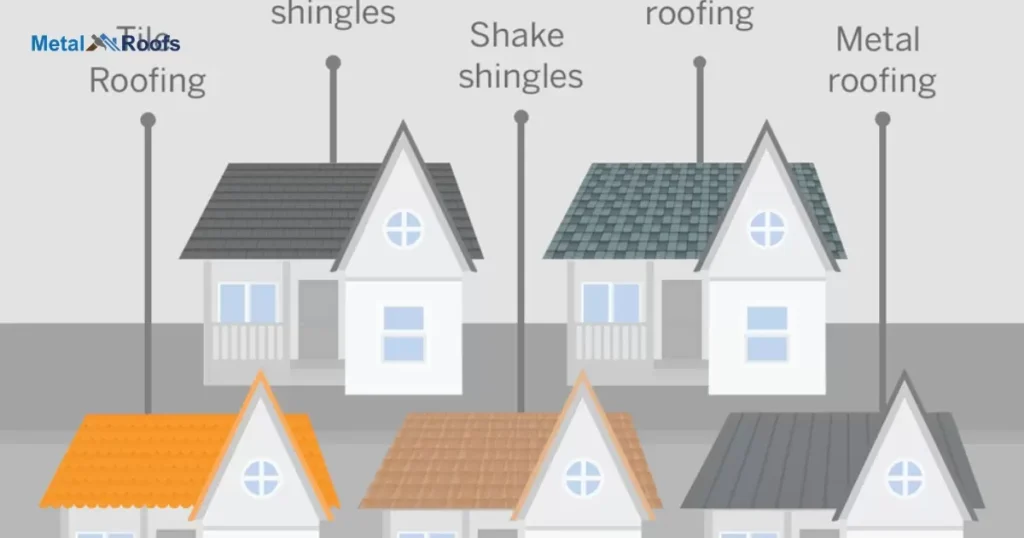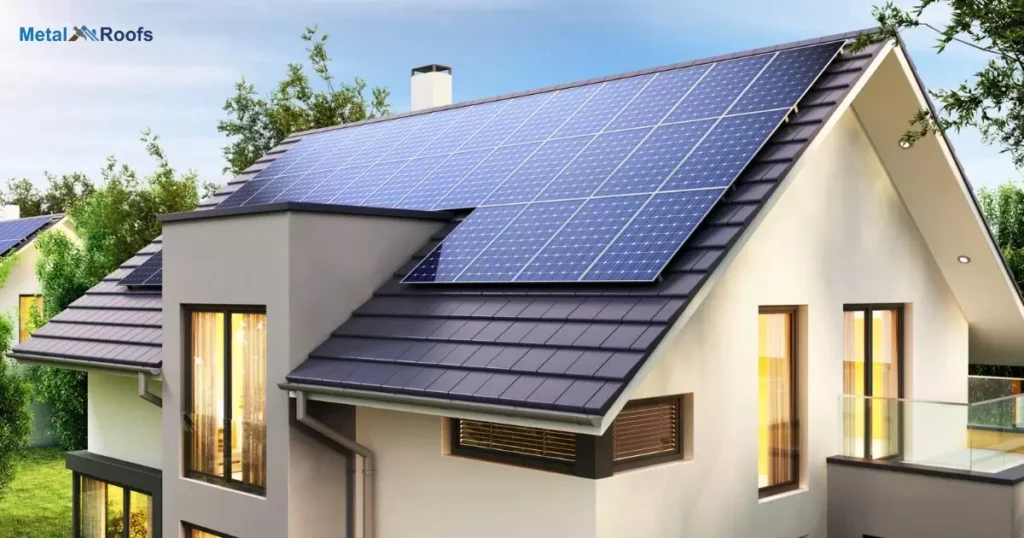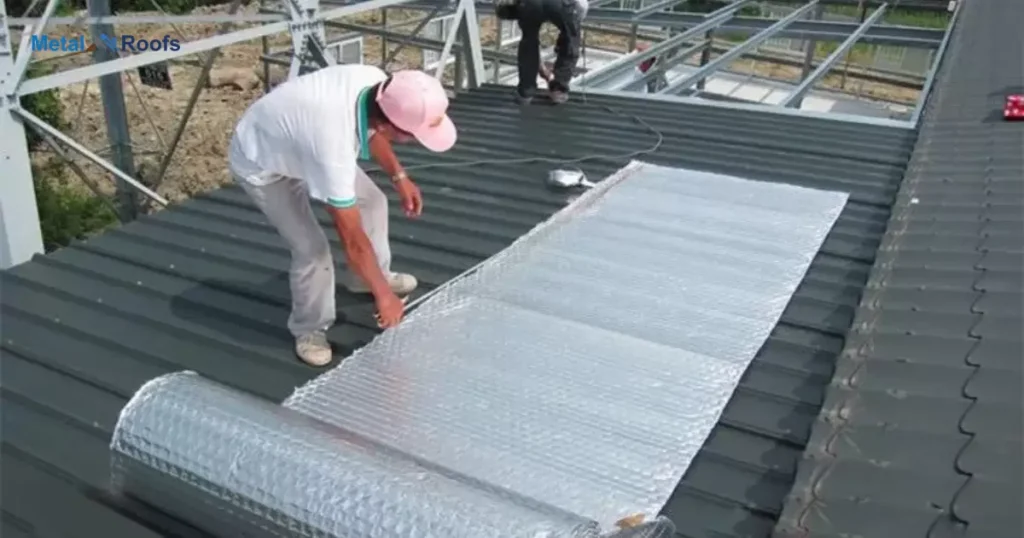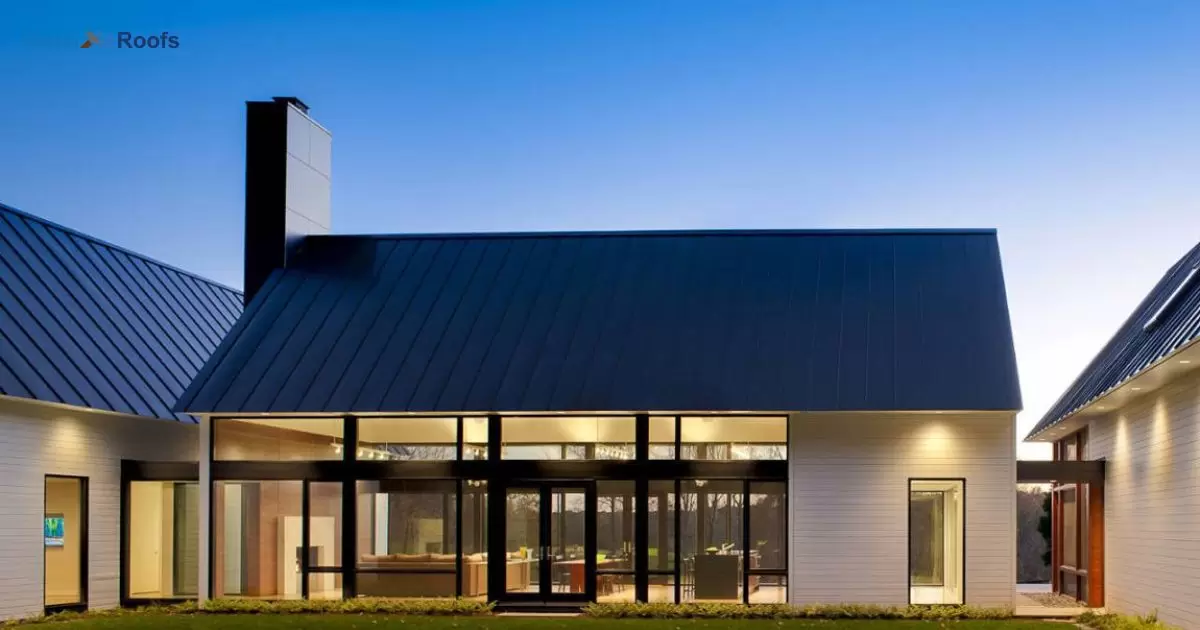Metal roofs boost home value by enhancing curb appeal and durability. They last longer than traditional roofing materials, saving homeowners money in the long run. Additionally, metal roofs offer energy efficiency, reducing utility bills and attracting potential buyers.
Curious about whether a metal roof boosts home value? Wonder no more. Studies suggest it does. Metal roofs not only add durability but also enhance curb appeal. With their longevity and energy efficiency, they’re becoming a sought-after feature in real estate.
Metal roofs offer more than just protection from the elements. They can increase your property’s value and provide long-term savings. Make a wise investment in your home’s future with a durable and stylish 29 gauge metal roof good.
Key Takeaways
- Metal roofs increase home value.
- Studies support their durability and energy efficiency.
- Enhanced curb appeal is a notable benefit.
- Investing in a metal roof can yield long-term returns.
How Does A Metal Roof Save Energy?
A metal roof saves energy by reflecting sunlight, reducing heat absorption into the home. This helps keep the interior cooler, reducing the need for air conditioning. Additionally, metal roofs often have a ventilated airspace underneath, which further helps in cooling the house.
Metal roofs are excellent at preventing heat transfer into the attic space. This means less heat is transferred into the living areas below, reducing the need for cooling. Overall, a metal roof can significantly lower energy bills and improve the overall energy efficiency of a home.
Benefits Of Energy Efficiency In Metal Roofs
Metal roofs offer numerous benefits when it comes to energy efficiency:
Reflectivity: Metal roofs are highly reflective, meaning they reflect a significant portion of the sun’s energy away from the building. This reduces the amount of heat absorbed by the roof, keeping the building cooler and reducing the need for air conditioning.
Cool Roof Effect: Metal roofs, especially those with light-colored coatings, contribute to the cool roof effect. This effect helps to mitigate the urban heat island effect by reducing heat absorption and improving the overall energy efficiency of buildings.
Insulation Compatibility: Metal roofs can easily accommodate insulation materials, enhancing their energy efficiency further. Proper insulation helps to prevent heat transfer, keeping the interior of the building cooler in summer and warmer in winter.
Longevity: Metal roofs are durable and long-lasting, often outlasting traditional roofing materials like asphalt shingles. Their longevity reduces the need for frequent replacement, which in turn saves energy and resources associated with manufacturing and transporting new roofing materials.
Recyclability: Metal roofs are highly recyclable at the end of their life cycle. This recyclability reduces the environmental impact of disposal and promotes sustainability in construction practices.
Energy Savings: The combination of reflectivity, insulation compatibility, and longevity translates to significant energy savings over the lifespan of a metal roof.
Financial Savings: While the initial cost of installing a metal roof may be higher than other roofing materials, the long-term energy savings and reduced maintenance costs often outweigh the initial investment.
Overall, metal roofs offer a compelling combination of energy efficiency, durability, and sustainability, making them an attractive option for both residential and commercial buildings.
How To Enhance Energy Efficiency In Metal Roofs?

| Strategies | Benefits |
| Use reflective coatings | Reduces heat absorption |
| Install insulation | Improves thermal performance |
| Choose light-colored metal | Reflects sunlight, lowers cooling costs |
| Opt for cool roof materials | Decreases energy consumption |
To enhance energy efficiency in metal roofs, start by ensuring proper insulation. Insulation helps regulate indoor temperatures, reducing the need for heating and cooling. Next, consider installing a reflective coating on the metal surface. This coating reflects sunlight, keeping the interior cooler in hot weather.
Maintaining the roof’s cleanliness is crucial. Dirt and debris can absorb heat, making the home warmer. Finally, seal any gaps or cracks to prevent air leakage, further improving energy efficiency. With these steps, you can optimize the energy performance of your metal roof and save on utility bills.
Energy Efficiency Measurements In Metal Roofs
Metal roofs enhance energy efficiency due to their reflective properties. They deflect sunlight, reducing heat absorption. This keeps homes cooler in warm climates, reducing the need for air conditioning. Consequently, homeowners save on energy bills. Metal roofs are recyclable, minimizing environmental impact.
They can also be coated with special finishes to further enhance reflectivity. This helps regulate indoor temperatures more effectively, enhancing comfort while lowering energy usage. In summary, metal roofs offer both economic and environmental benefits through their energy-efficient design.
Advanced Installation Methods For Energy Efficiency
Advanced installation methods for energy efficiency encompass a range of techniques and technologies aimed at reducing energy consumption and maximizing the efficiency of systems within a building or infrastructure. Here are some advanced methods commonly used:
Insulation: Utilizing advanced insulation materials such as spray foam, aerogel, or vacuum insulated panels can significantly reduce heat transfer through walls, roofs, and floors, thus reducing heating and cooling loads.
Air Sealing: Properly sealing air leaks in the building envelope using techniques such as caulking, weatherstripping, and applying gaskets around windows and doors helps prevent conditioned air from escaping and unconditioned air from entering the building.
High-Performance Windows: Installing windows with low-emissivity coatings, multiple panes, and insulated frames can minimize heat transfer, reduce air leakage, and improve overall comfort while decreasing heating and cooling loads.
Energy Recovery Ventilation (ERV): ERV systems transfer heat and moisture between incoming and outgoing air streams, pre-conditioning fresh air entering the building with the energy from the exhaust air, thereby reducing the load on heating and cooling systems.
Duct Sealing and Insulation: Sealing and insulating ductwork prevents air leakage and minimizes heat loss or gain as air moves through the HVAC system, improving overall efficiency.
Advanced HVAC Systems: Installing high-efficiency heating, ventilation, and air conditioning (HVAC) systems with variable speed drives, energy recovery systems, and zoned controls can optimize energy usage based on occupancy and load requirements.
Smart Thermostats and Controls: Implementing programmable or smart thermostats allows for precise control of heating and cooling systems, optimizing energy usage based on occupancy schedules and external conditions.
Daylighting and Lighting Controls: Maximizing natural daylight through strategic window placement and utilizing energy-efficient lighting technologies such as LEDs, along with occupancy sensors and daylight harvesting controls, can reduce the need for artificial lighting and lower energy consumption.
Renewable Energy Integration: Incorporating on-site renewable energy sources such as solar panels, wind turbines, or geothermal heat pumps can offset energy usage from traditional grid sources, further enhancing overall energy efficiency.
Building Energy Management Systems (BEMS): Implementing BEMS allows for centralized monitoring, control, and optimization of various building systems, including HVAC, lighting, and power distribution, to ensure maximum energy efficiency and occupant comfort.
These advanced installation methods can be combined and tailored to specific building types, climates, and energy goals to achieve significant reductions in energy consumption and operational costs while enhancing occupant comfort and environmental sustainability.
Cutting-Edge Materials For Energy Efficiency

When it comes to enhancing energy efficiency, cutting-edge materials play a vital role. Modern homes utilize advanced materials like high-performance insulation and thermal windows to reduce energy consumption. These materials trap heat in the winter and keep homes cool in the summer, lowering utility bills.
Another innovation is the use of reflective roofing materials, such as metal or cool roofs, which deflect sunlight and reduce heat absorption. Additionally, smart technologies like programmable thermostats and energy-efficient appliances further optimize energy usage.
How To Choose The Right Metal Roof For Energy Efficiency?
Choosing the right metal roof for energy efficiency is crucial for saving on utility bills and reducing environmental impact. Start by selecting a light-colored roof to reflect sunlight and minimize heat absorption. Opt for materials like aluminum or steel, known for their high solar reflectance and emissivity.
Consider a cool metal roof with a reflective coating to further enhance energy efficiency. Ensure proper insulation under the roof to prevent heat transfer and improve thermal performance. Lastly, consult with a professional roofer to assess your home’s specific needs and choose the best metal roofing solution for maximum energy savings.
Energy Efficiency And Home Value
A home’s energy efficiency can significantly impact its value. Energy-efficient features like insulation, double-pane windows, and efficient appliances can reduce utility bills and increase comfort. Potential buyers often prioritize homes with lower operating costs and higher comfort levels.
Therefore, investing in energy-efficient upgrades can enhance a home’s appeal and resale value. Furthermore, energy-efficient homes contribute to environmental sustainability by reducing energy consumption and greenhouse gas emissions. As environmental awareness grows, more buyers are seeking eco-friendly properties.
Metal Roof Standing Seam

Metal roofs with standing seam panels are a popular choice for homeowners. The standing seam design offers sleek lines and a modern look. These roofs are highly durable and can last 50 years or more with proper maintenance. They are resistant to harsh weather conditions such as rain, snow, and hail.
Standing seam roofs are energy-efficient, helping homeowners save on heating and cooling costs. Overall, opting for a metal roof with standing seam panels can enhance the value of a home while providing long-term durability and energy savings.
Standing Seam Exposed Fastener
Standing seam and exposed fastener are two common types of metal roofing systems. The standing seam method involves interlocking metal panels vertically, creating raised seams. Exposed fastener roofs, on the other hand, have screws or nails visible on the surface of the panels.
Standing seam roofs offer a sleek, modern look and better resistance to leaks since the fasteners are hidden. Exposed fastener roofs are more economical and easier to install but may be prone to leaks over time. Both options have their advantages and drawbacks, so homeowners should consider their priorities and budget when choosing a metal roofing system.
Frequently Asked Questions
Is It Worth It To Put On A Metal Roof?
Putting on a metal roof is worth it for its durability, energy efficiency, and increased home value.
What Is The Best Roof For A Home Value?
For maximizing home value, consider durable materials like metal or clay. These options offer longevity, aesthetic appeal, and energy efficiency.
Why Put A Metal Roof On A House?
Metal roofs offer durability, energy efficiency, and aesthetic appeal, making them a wise investment for homeowners.
Conclusion
Both standing seam and exposed fastener metal roofs offer benefits. Homeowners should weigh durability, aesthetics, and budget before deciding. While standing seam roofs boast sleek looks and hidden fasteners, exposed fastener roofs are more budget-friendly and easier to install. Ultimately, the choice depends on individual preferences and needs.
Regardless of the type chosen, a metal roof can enhance home value. Its durability and energy efficiency make it an attractive investment. Homeowners should consult with roofing professionals to determine the best option.











